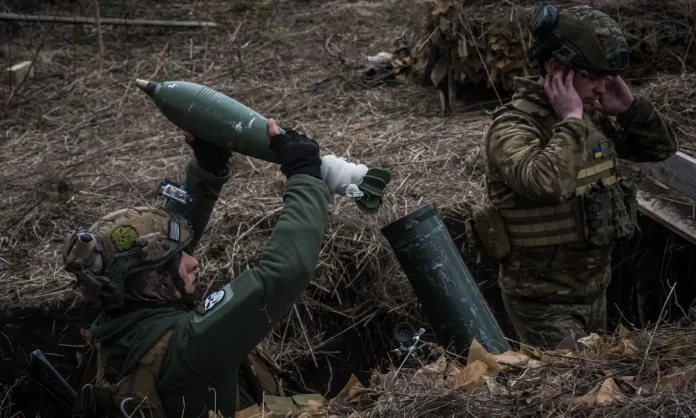Earlier this year, reports emerged that the war in Ukraine seemed to have reached a stalemate. However, a more concerning prospect has arisen, with a new Russian offensive breaking through Ukraine’s fortifications, especially at a time of ammunition and manpower shortages, according to The Economist.
Following the fall of Avdiivka in February, Russian forces have launched a major offensive in eastern Ukraine and are advancing as far west as possible in an attempt to prevent Ukraine from forming stronger defensive lines there.
Michael Kofman of the Carnegie Endowment for International Peace stated that Ukraine desperately needed “manpower, fortifications and ammunition.” An analyst at Rochan Consulting and author of the Ukraine Conflict Monitor, Konrad Muzyka, suggested that at such a pace, major changes could be seen by the end of the summer.
The next five to six months could be critical.
Having resumed grain exports from Odesa, Ukraine is conducting an aerial campaign against infrastructure in Russia using home-made drones, thanks to which Kyiv is partially compensating for “shell hunger.” However, drones cannot deliver concentrated fire the way artillery can.
The blocking of the Biden administration’s $61 billion military aid package by Republicans in Congress led to direct consequences, especially amid the European Union’s inability to provide more than half a million shells it had promised to deliver by this month.
The best prospect of helping Ukraine is an initiative that the Czech government has been working on since the outbreak of the war. So far, the Czechs have purchased about 800,000 shells, with several countries, including Germany, the Netherlands, Denmark and Canada, contributing money. They would be able to obtain 1.5 million shells if 3 billion euros ($3.3 billion) could be accumulated, the Czech government stated.
Aside from shells, Kyiv also catastrophically lacks air defence interceptors. On the night of 21-22 March, when the largest attack on Ukraine’s energy system since the start of the war took place, only 92 of 151 missiles and drones launched by Russia were intercepted.
Ukraine also faces a shortage of tanks and other fighting vehicles, although it is hoped that America can send it hundreds of Bradley combat vehicles without seeking more money from Congress.
Another challenge the military leadership of the war-torn country faces is recruiting new soldiers to replace the exhausted ones. The average age of Ukrainian troops serving on the front lines is 43. While morale is reportedly generally high, many are fatigued and in need of rotation.
Meanwhile, Russia sends about 30,000 fresh soldiers to the frontline every month, Muzyka has noted. Experts argue that Ukraine needs to carry out a larger mobilisation. In December, then AFU commander-in-chief Valery Zaluzhny wanted to recruit another 400,000 soldiers, but President Volodymyr Zelensky refused to sign a bill that would have lowered the conscription age to 25.
The mobilisation bill making its way through parliament has been subject to numerous amendments, including requirements that soldiers must rotate every six months and be eligible to retire after three years. It may pass in early April, while it will take several months to train new recruits. In the meantime, new commander-in-chief Oleksandr Syrskyi is conducting an enquiry to find out why, with a 900,000-strong army, only 300,000 soldiers actually participated in the fighting.
Ukraine’s comprehensive defence system, including anti-tank ditches, “dragon’s teeth” obstacles, minefields, firing points and earthworks to protect infantry, is only now beginning to take shape. Muzyka noted that with this state of affairs, a stalemate seemed to be the most favourable outcome for Ukraine, given the waning aid from its Western allies.
